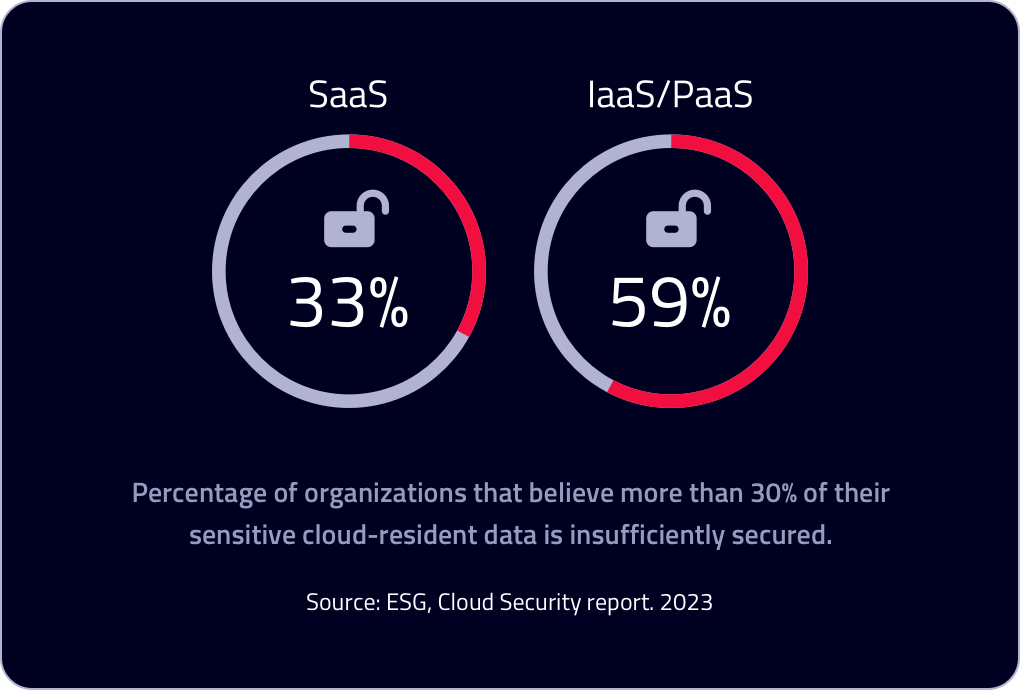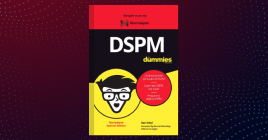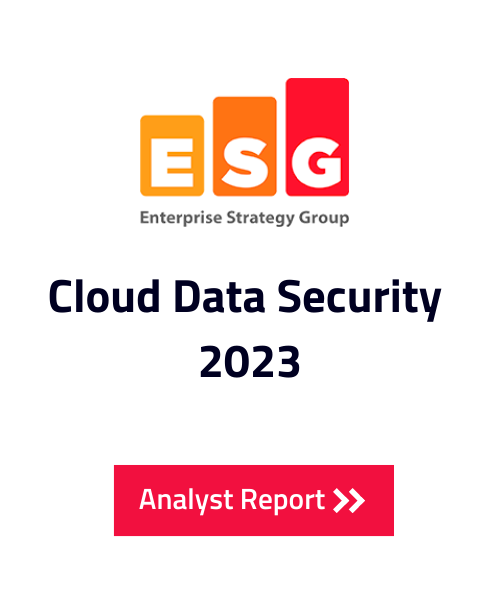DSPM: Why now?
Security leaders are trying to navigate the use of disparate controls, which have led to inconsistent visibility and control of sensitive data in the cloud. Data Security Posture Management (DSPM) is a new framework that arms security professionals with tools for securing cloud-resident data at scale.

Cloud Data is Exposed
To understand why DSPM’s moment is now, here are the top reasons for its adoption by modern data-focused organizations.
Legacy vs. Modern
Requirements
Modern environments place enormous value on data, but organizations have always valued their data – so what’s different now? Basically, it’s about how data is stored and used now versus in the past. A decade ago, data security was exclusively an on-premises affair.
From on-premises…
Computer centers, data storage, and users were onsite (although physical backups were manually moved offsite). The data store was a single, monolithic structured database, 3-tiered access was strictly controlled, and security was simpler to manage.
When organizations began using cloud computing, many simply replicated their on-premises environment into the cloud and continued using old techniques to keep an eye on cloud data security.
… to multi-cloud
In the last five years, digital transformation with cloud technology has radically changed computing, storage, applications, locations, devices, and usage – virtually everything is different now versus the past.
Proliferation of data across the multi-cloud requires stricter data access governance, risk detection, and compliance controls than in a purely on-prem environment.
There are many tools for data security, but the requirements mentioned for a modern hybrid cloud environment make it impossible to definitively secure cloud-resident sensitive data with siloed, manual security functionality. Integration of all vital functionality in a single data security platform is necessary and, according to ESG’s study, preferred by two-thirds of survey respondents.
The role of DSPM is to provide an integrated security platform that gives an accurate picture of cloud data security posture and allows your teams to:
Discover Data Stores |
|
| Find structured and unstructured sensitive data and users who can access it across all of your cloud environments. | |
Prioritize Risks |
|
| Discover paths to cloud data that weigh data sensitivity against identity, access governance, vulnerabilities, and configurations. |
Minimize Exposure |
|
| Classify sensitive data and map it to regulatory frameworks for identifying areas of exposure and how much data is exposed. |
Remediate Early |
|
| Connect with DevSecOps workflows to remediate risks earlier in the application development lifecycle. |
Normalyze: Agentless, End-to-End DSPM Scanning
Normalyze offers comprehensive data discovery and classification for your sensitive structured and unstructured data, both at rest and in motion. Improve your cloud data security with end-to-end visibility. Contact us today.



